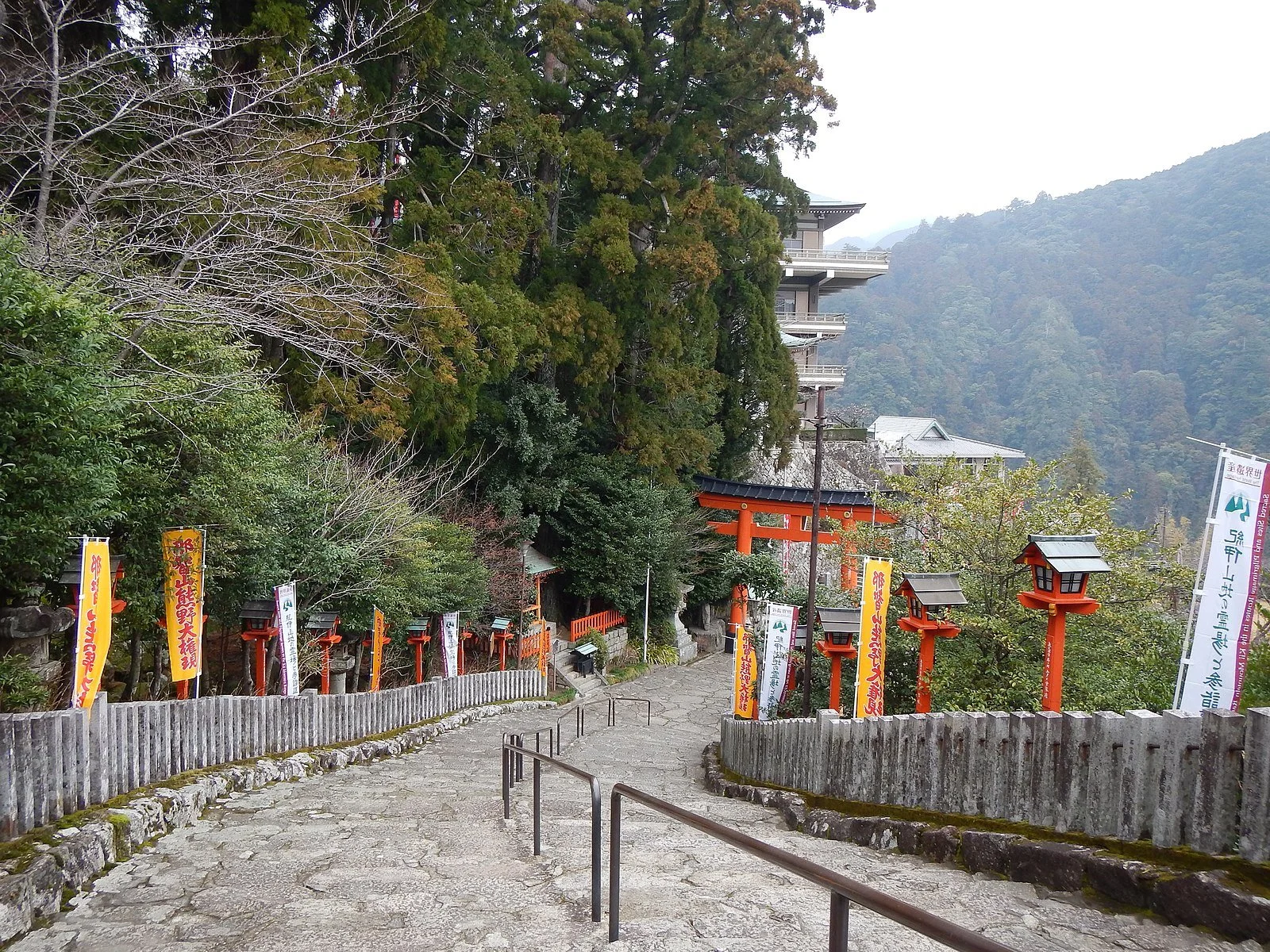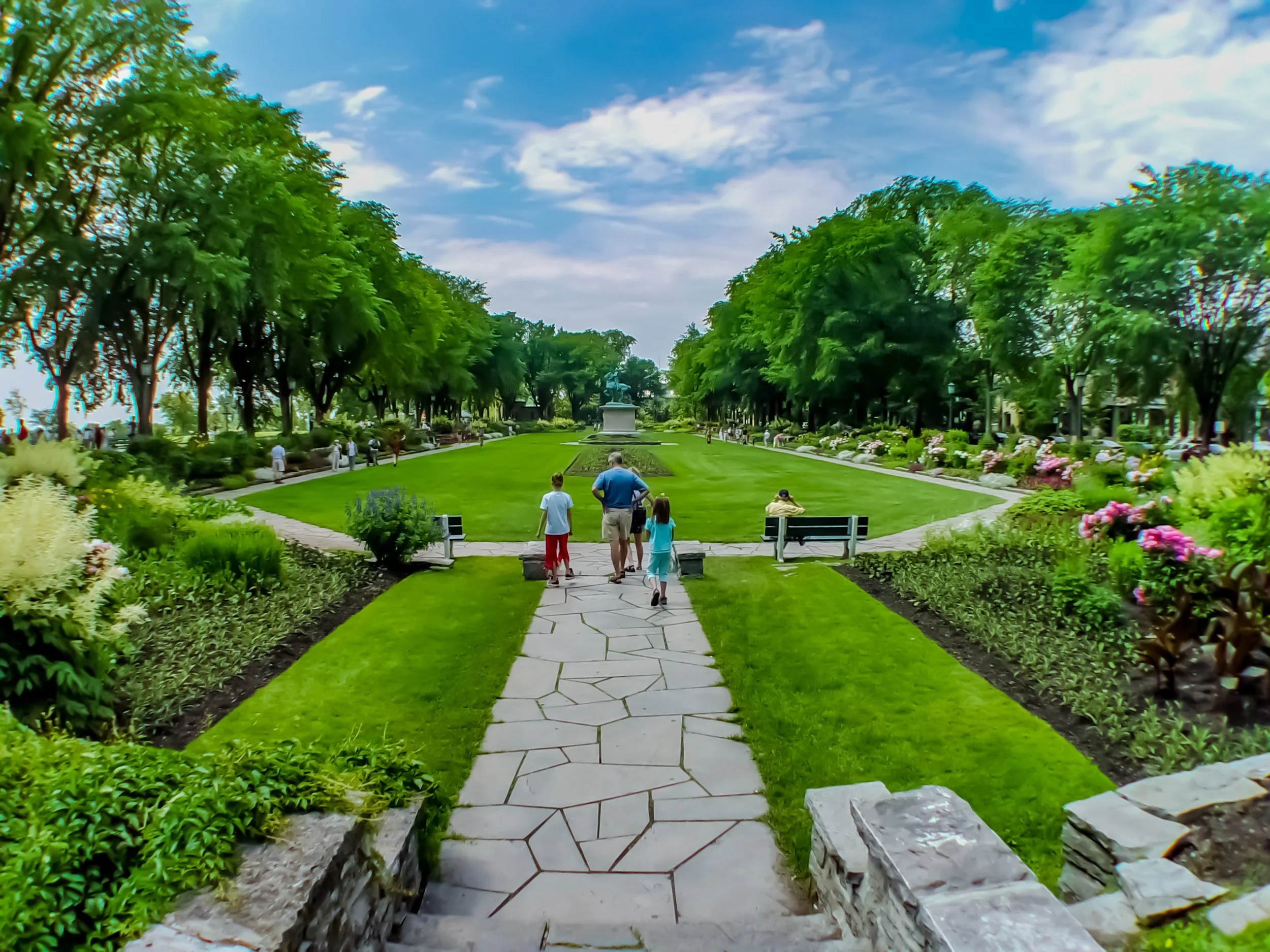With revitalized infrastructure and a focus on sustainability, these historic paths are now equipped to welcome environmentally-conscious travelers, ensuring the preservation of their cultural and natural heritage for generations to come.
Ancient pilgrimage routes have long served as spiritual journeys, cultural connections and paths to self-discovery. Today, trails like the Camino de Santiago in Spain and the Kumano Kodo in Japan are witnessing a revival, attracting modern adventurers seeking more than just scenery. Routes such as the Inca Trail in Peru, Abraham’s Path across the Middle East and the ascent to Adam’s Peak in Sri Lanka offer a unique blend of historical spirituality and modern adventure.
Man biking the Camino de Santiago. Ivan Blanco Vilar. CC BY-NC-ND 3.0.
1. Camino de Santiago, Spain
The Camino de Santiago is a network of pilgrimage paths across Spain, France and Portugal that lead to the Cathedral of Santiago de Compostela in Galicia, Spain, the location of the shrine to the apostle James. It is known as one of the most significant Christian pilgrimages and was popularized during the Middle Ages. Modern hikers can choose from a range of routes and starting points differentiated by length and difficulty. Traveling on foot or bike are two of the most common ways to make the journey. Traversing the route is easy to do sustainably and respectfully by staying in small local accommodations, purchasing locally-sourced food and supplies and engaging with the community through volunteer efforts or learning experiences. Traveling the Camino in full by the popular Camino Frances route will take a traveler with average fitness and high stamina an estimated four to six weeks to complete when walking approximately 12 to 18 miles a day. The shorter Camino Ingles route is better suited for travelers with less time and stamina, lasting about six days. Villages are scattered along the path, featuring abundant albergues or pilgrimage hostels. The albergues typically cost around $15 a night, providing travelers with cheaper option as opposed to the more expensive private lodging options.
Kumano Kodo Pilgrimage Route. Nekosuki. CC BY 4.0.
2. Kumano Kodo, Japan
The Kumano Kodo is a series of ancient pilgrimage routes located across the Kii Peninsula in Japan. The route leads to the Kumano Sanzan, the three grand shrines of Kumano: Hongu Taisha, Hayatama Taisha and Nachi Taisha. Recognized as a UNESCO World Heritage Site, the Kumano Kodo has been an important spiritual journey for centuries, rooted in both Shinto and Buddhist traditions. Walking the Kumano Kodo is the most traditional way to undertake the pilgrimage, allowing travelers to connect deeply with the natural environment and the journey’s spiritual significance. Travel blogs have named the Kumano Kodo the best destination for sustainable travel in Japan. Visitors are encouraged to respect the cultural and environmental heritage of the region, emphasizing a responsible pilgrimage. The most popular route on the Kumano Kodo takes an average hiker about four to six days to complete. An alternative, longer eastern route typically takes travelers up to two weeks to complete, with mild elevation gain. The third and most difficult route is only recommended to travelers of high fitness due to its several mountain passes and steep elevation gain. Traditional ryokan and minshuku lodgings are located along the path, typically costing between $50 and $100 a night, including meals.
Ruins along the Inca Trail. Greg Willis. CC BY-SA 3.0.
3. Inca Trail, Peru
The Inca Trail consists of three ancient paths in the Andes Mountains that lead to the ancient city of Machu Picchu, a UNESCO World Heritage Site and one of the most iconic remnants of the Inca Empire. Known for its breathtaking mountain scenery, cloud forests and archaeological sites, the Inca Trail is considered one of the world’s most famous treks. There are several variations of the trail, though the classic route typically takes four days to complete. Hiking the Inca Trail is the most traditional way to experience this journey, offering a connection to both the natural beauty and the cultural significance of the Andes. Sustainability is a key aspect of the experience, with efforts being made by tourists to preserve the trail and its surroundings. Travelers can stay in eco-friendly accommodations, hire local guides and porters, and contribute to the trail’s preservation by following responsible tourism practices. Respect for the environment and cultural heritage ensures that the Inca Trail remains a preserved spiritual and historical site. The traditional Inca Route is considered to be of moderate difficulty, stretching 26 miles and taking three to five days to complete. The high altitude makes the path suitable for experienced hikers and climbers, and no independent traveling is allowed on the trail. Hikers must travel with guide groups, who provide the proper permitting, campsites, guides and meals, which can set travelers back over $1,000.
The Plains of Abraham. Michel Rathwell. CC BY 2.0.
4. Abraham’s Path
Abraham’s Path is a cultural walking trail tracing the footsteps of the ancient figure Abraham across the Middle East. Spanning modern Turkey, Jordan, Palestine and Israel, the path is rooted in the shared heritage of the Abrahamic faiths and offers travelers a unique opportunity to connect with the history, culture and traditions of the region. The path is composed of various routes with different lengths and levels of difficulty, winding through vibrant villages, stunning natural landscapes, and historical sites. Walking Abraham’s Path encourages tourists to experience a deeper understanding of the region's cultural diversity and the stories that unite its people. Responsibility and respect are significant to the experience, with opportunities to stay in locally-owned accommodations, enjoy traditional meals prepared by local families, and engage with communities through cultural exchanges and storytelling. By practicing sustainable tourism, visitors help preserve the heritage of the path and contribute to the livelihoods of the groups who reside across these regions. The most traveled section of the path, an 80-mile segment through the West Bank, typically takes four to eight days to complete across a range of rocky paths and rolling hills. Lodging is scattered, and so is its pricing, as travelers can stay in hostels, guest homes, homestays, or other private options, ranging from approximately $10 to $50 per night.
Adam’s Peak (Sri Pada Mountain). Jithey. CC BY-SA 4.0
5. Adam’s Peak, Sri Lanka
Adam’s Peak, known to locals as Sri Pada, is a sacred mountain in Sri Lanka revered by Buddhists, Hindus, Muslims, and Christians alike. Pilgrims ascend the peak to visit the revered footprint-shaped impression at the summit, believed to belong to the Buddha, Lord Shiva, Adam or St. Thomas, depending on the religious tradition. The journey is a spiritual and cultural experience, traditionally undertaken at night to witness the sunrise from the mountaintop. There are several routes to choose from, varying in length and steepness, making the climb accessible to a range of travelers. Visitors are encouraged to tread lightly, stay in nearby accommodations run by local families, and immerse themselves in the vibrant communities along the way, though cleanup efforts often follow major pilgrimage events. One of the shortest pilgrimage trips, the path is five miles round trip, taking 6-10 hours due to the steep, stair-heavy climb on the way up. Travelers typically stay in accommodations in nearby towns, which can cost between $10 to $30 a night.
Zoe Lodge
Zoe is a student at the University of California, Berkeley, where she is studying English and Politics, Philosophy, & Law. She combines her passion for writing with her love for travel, interest in combatting climate change, and concern for social justice issues.






